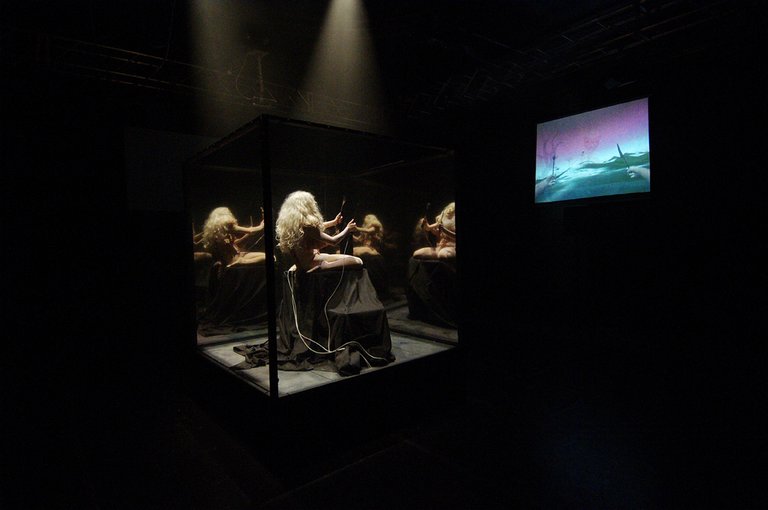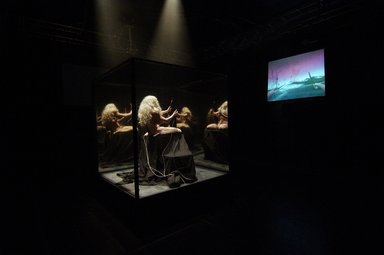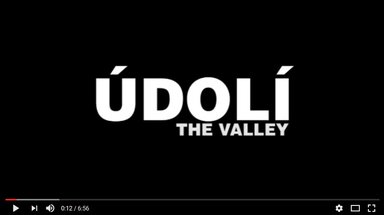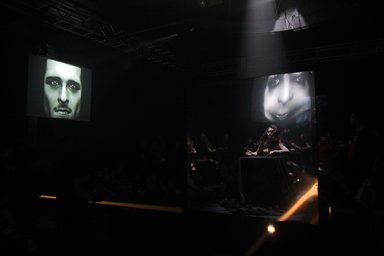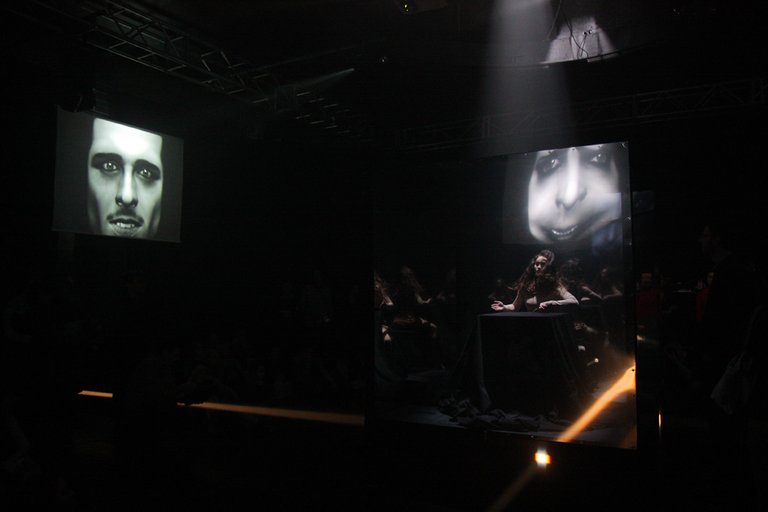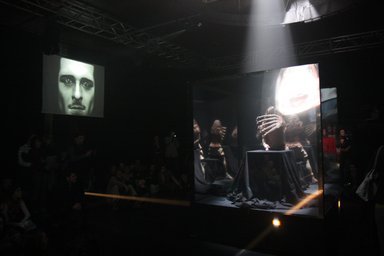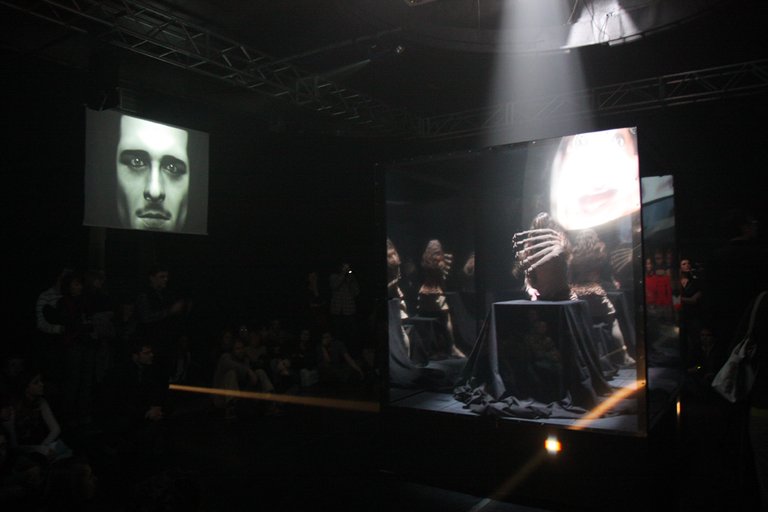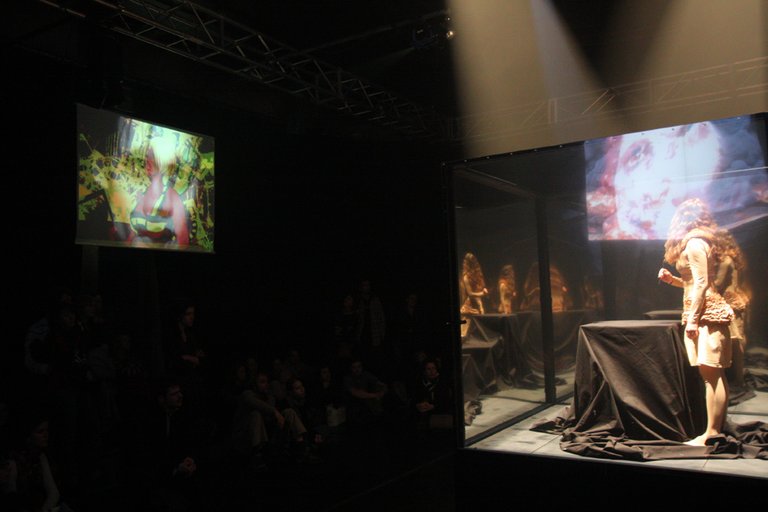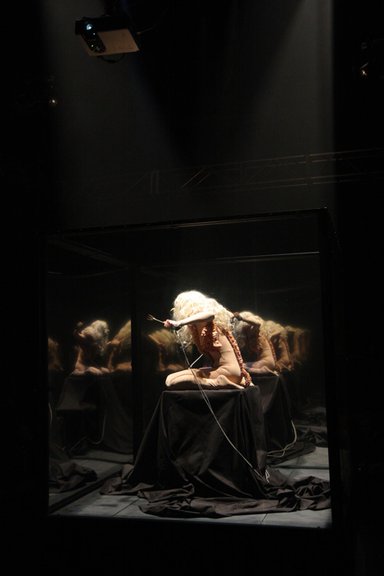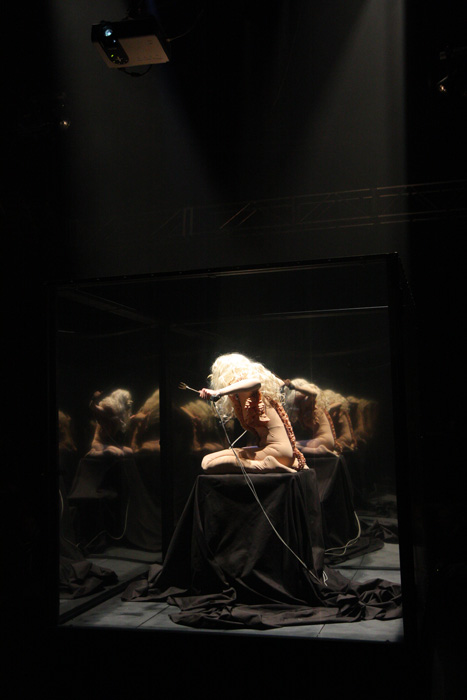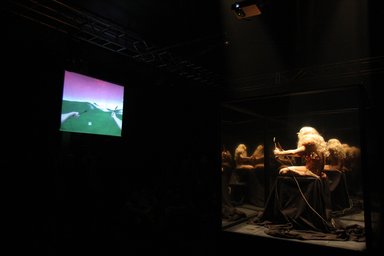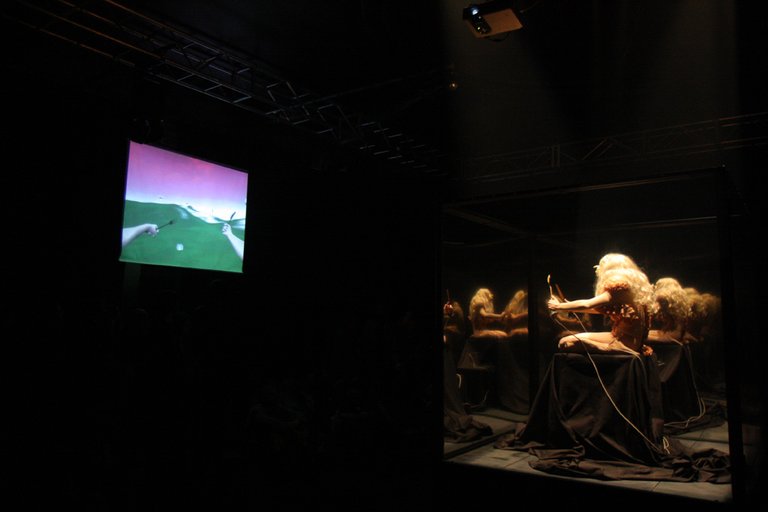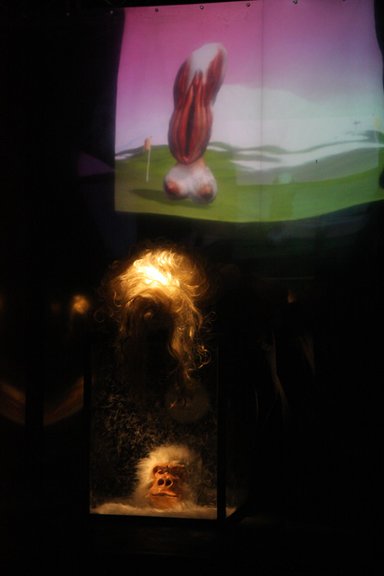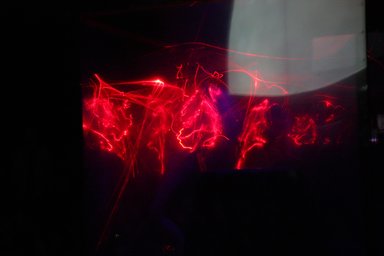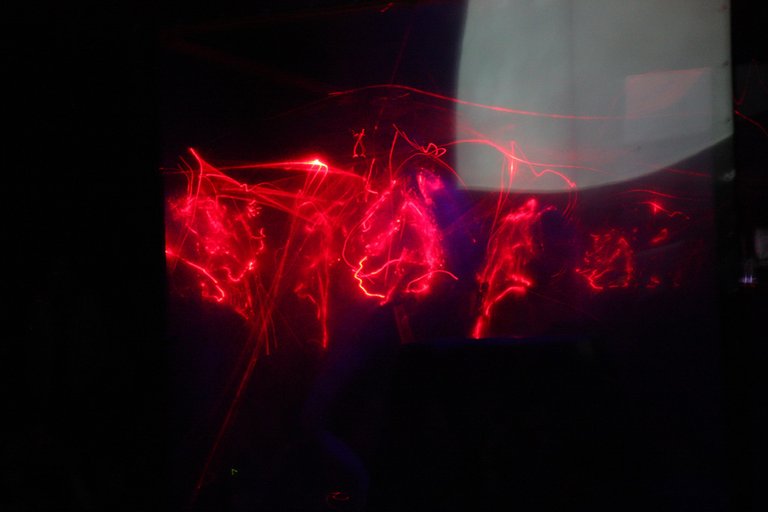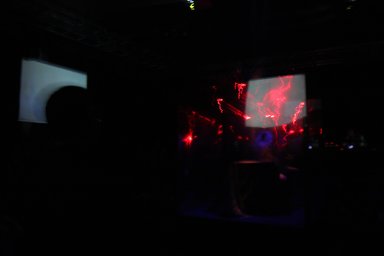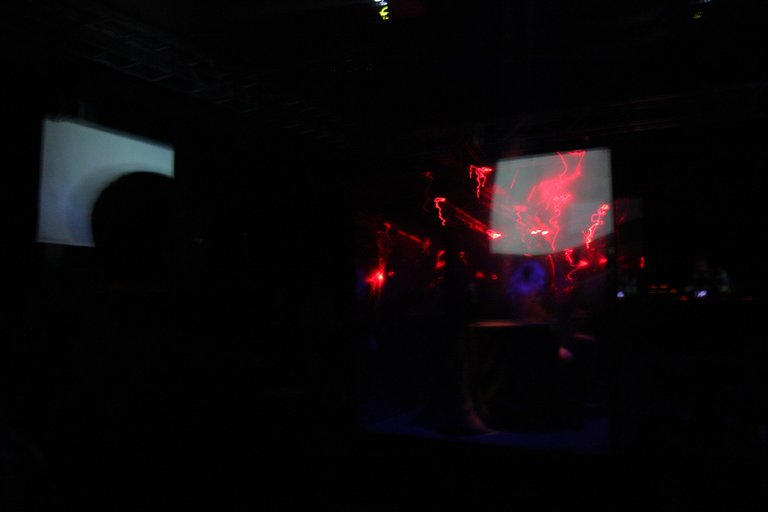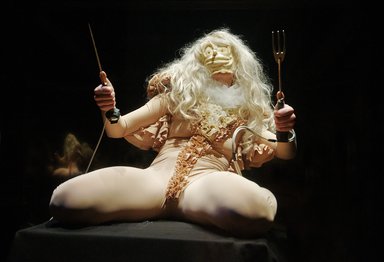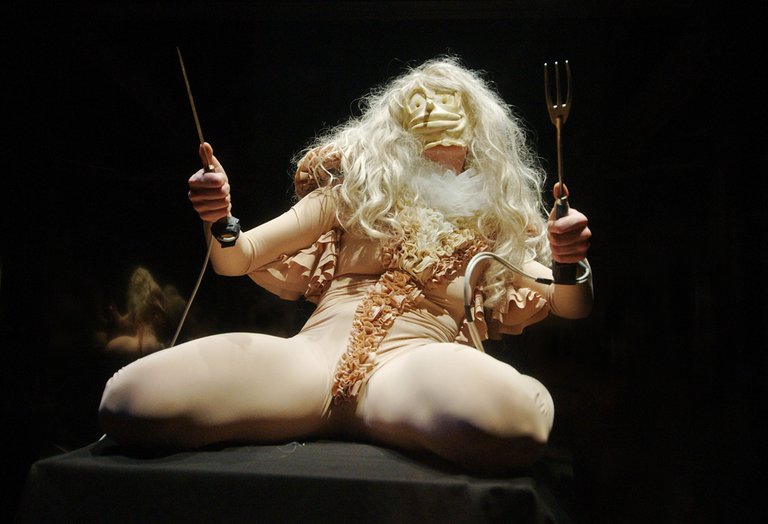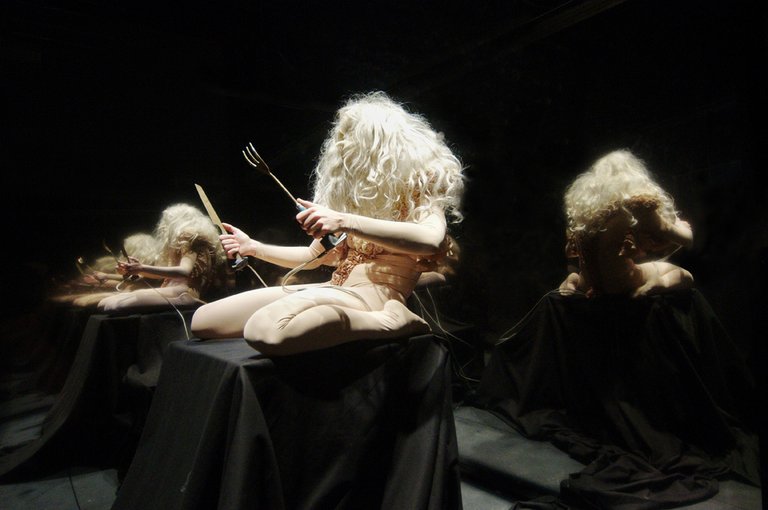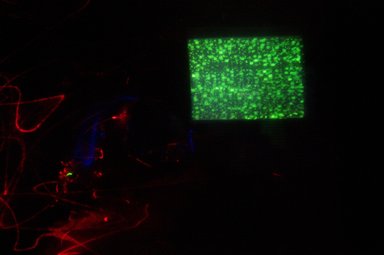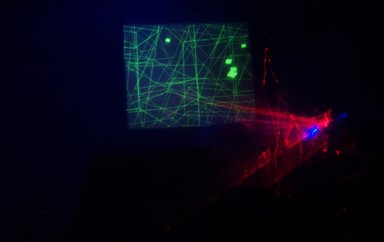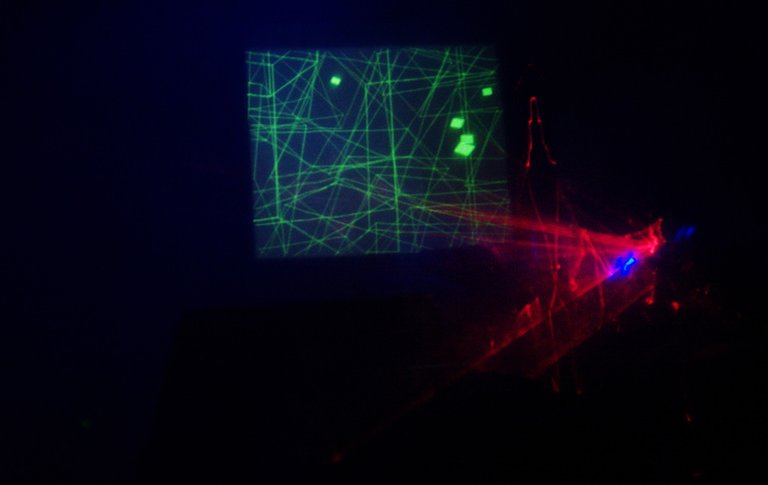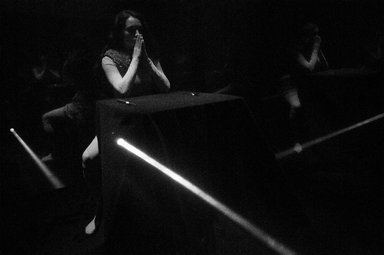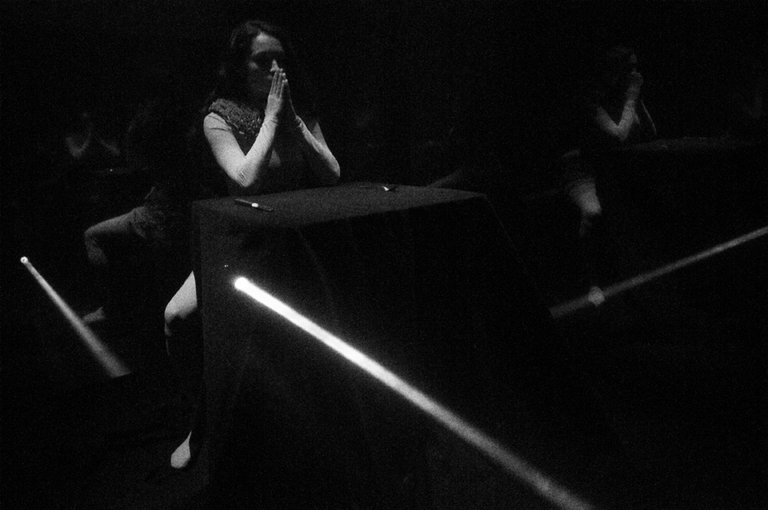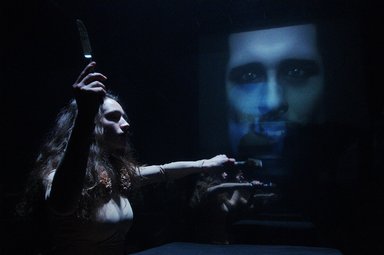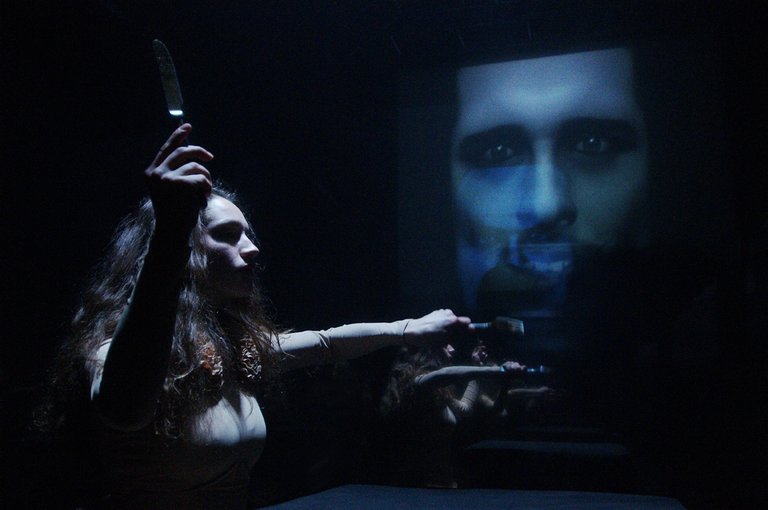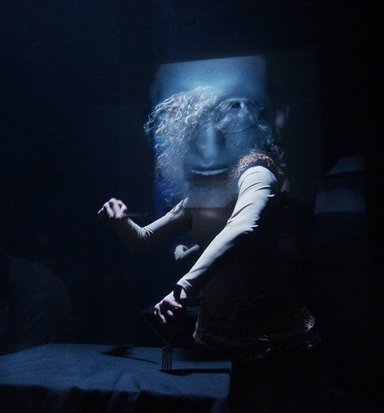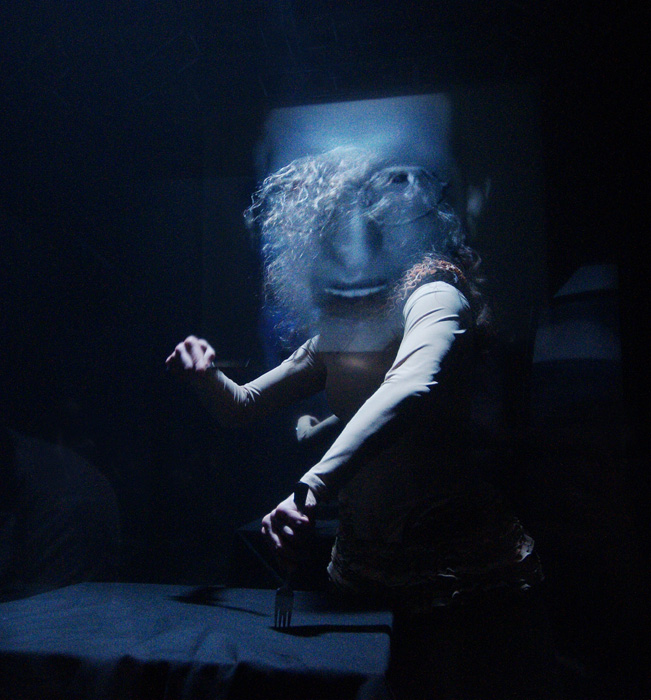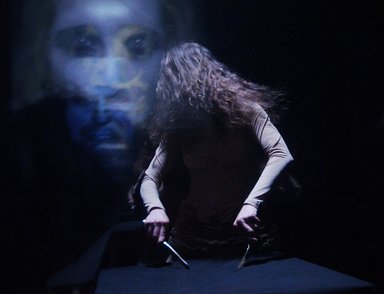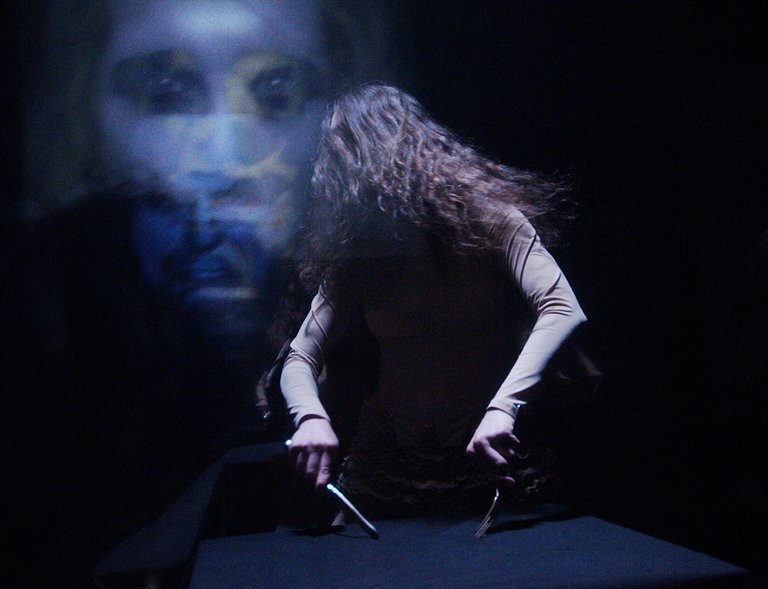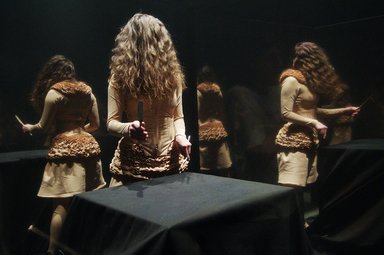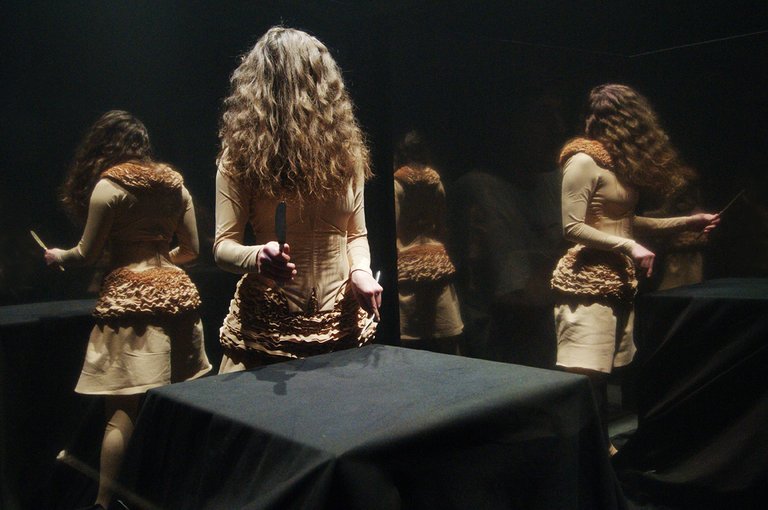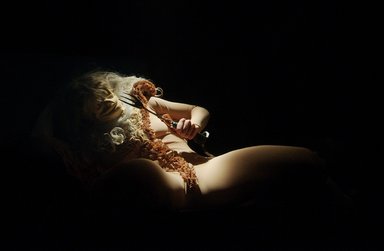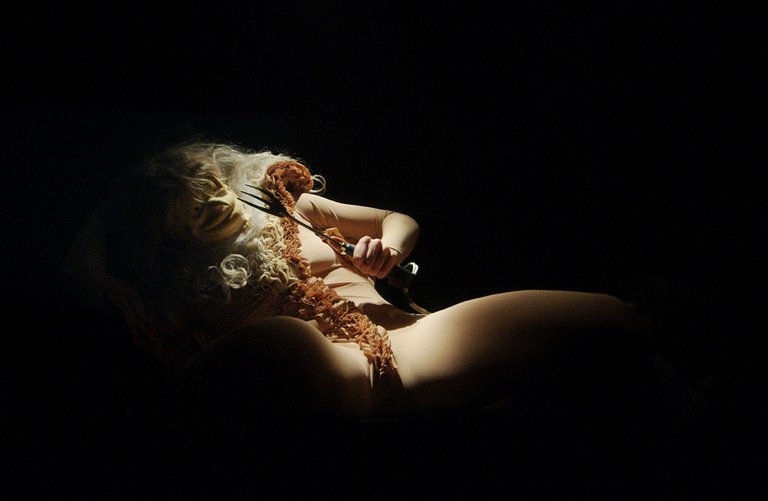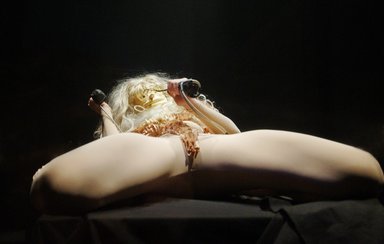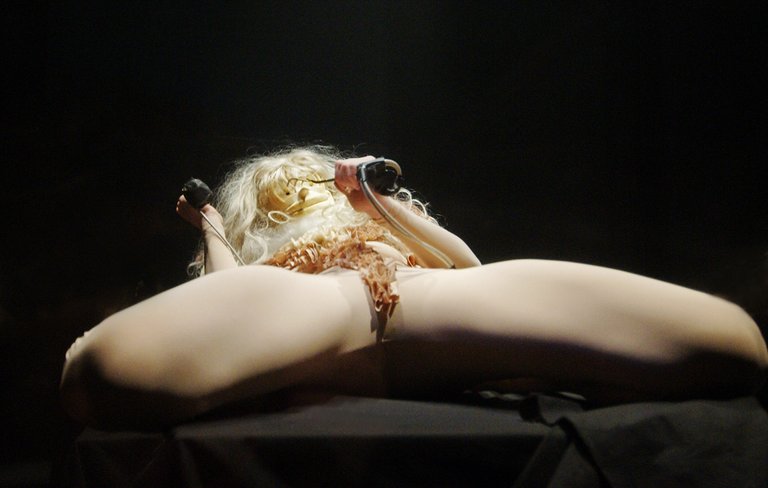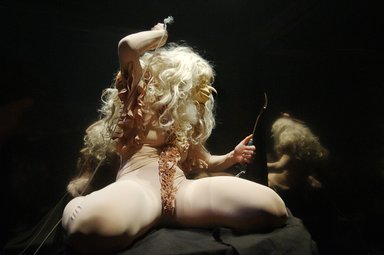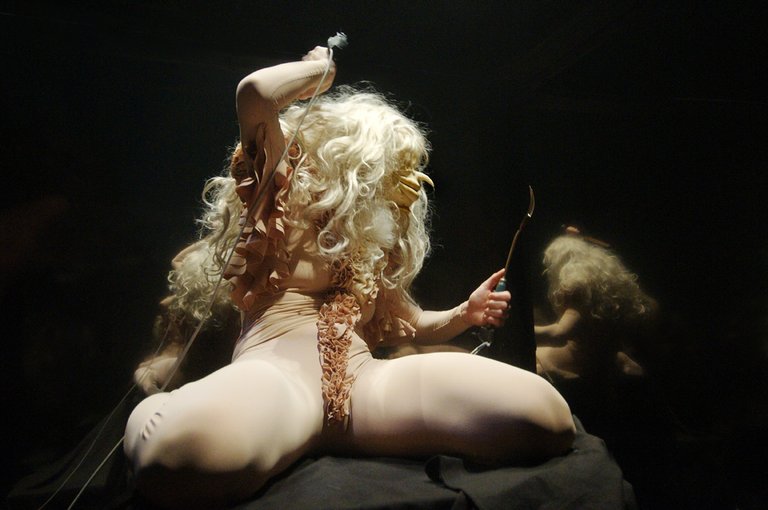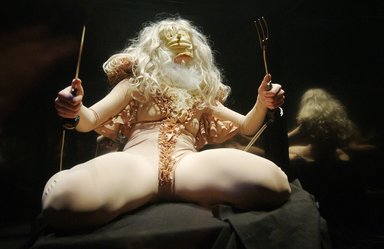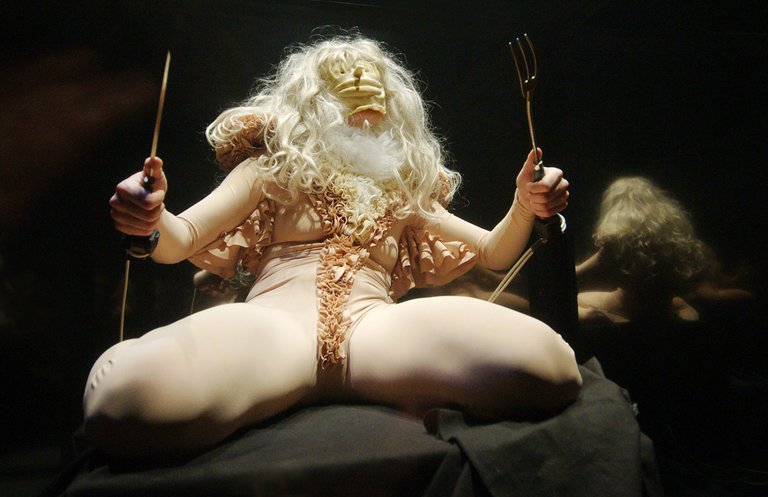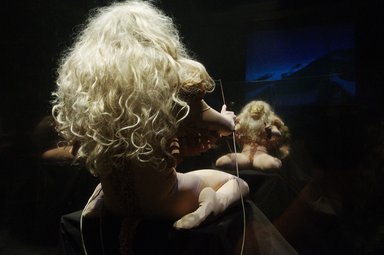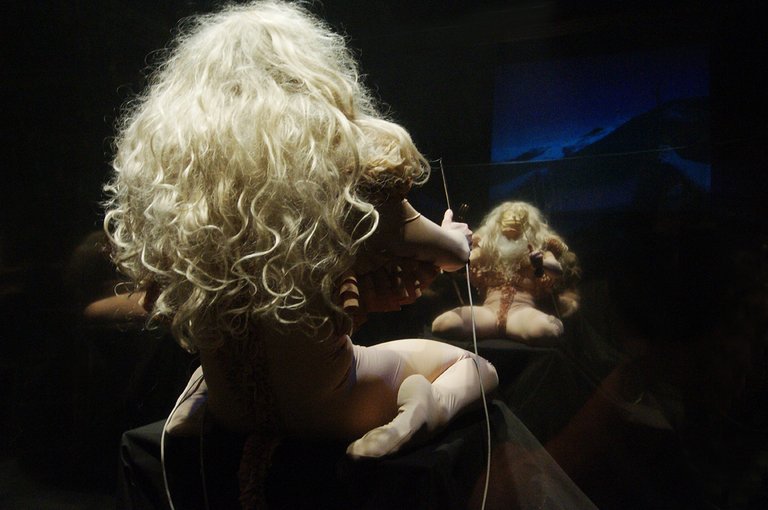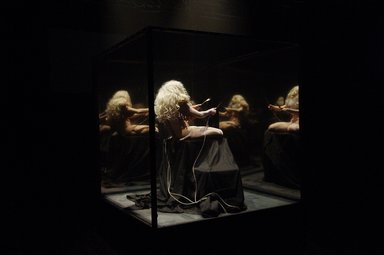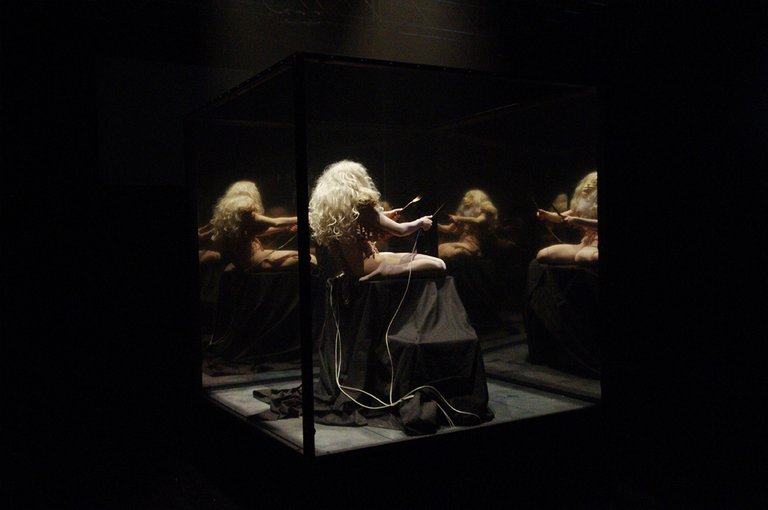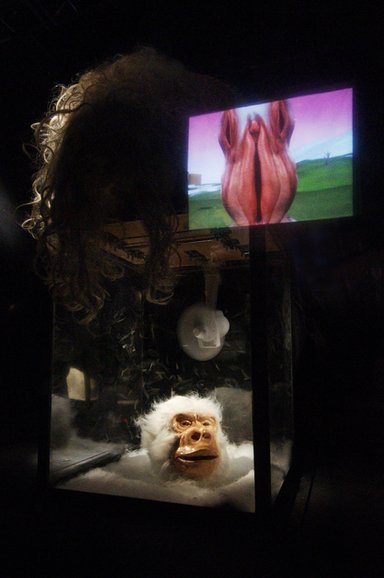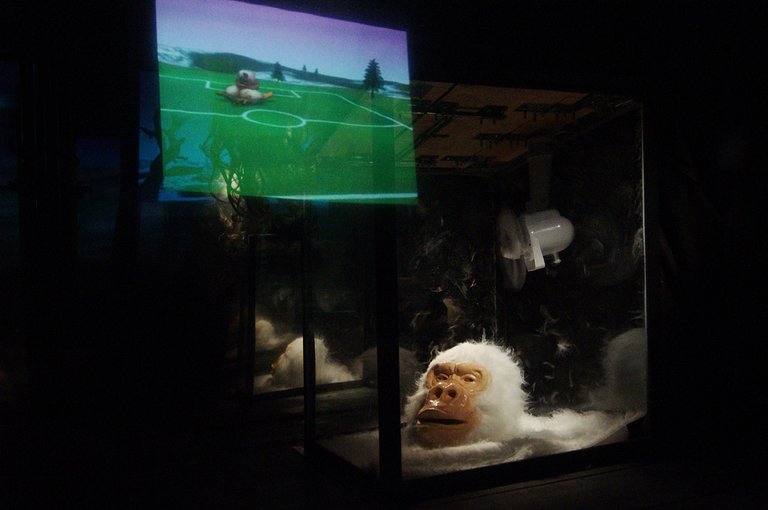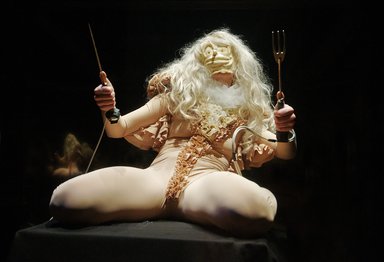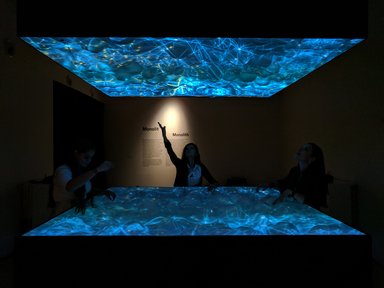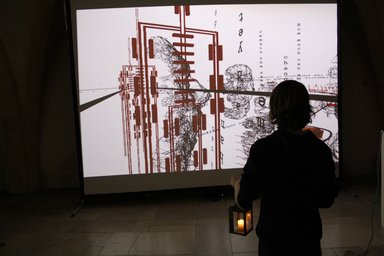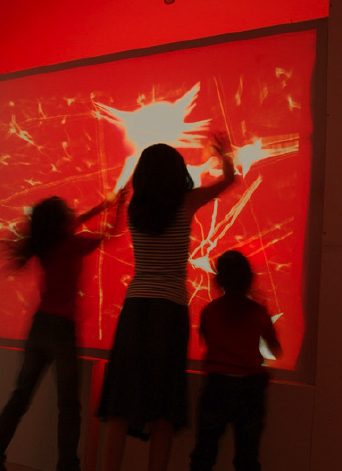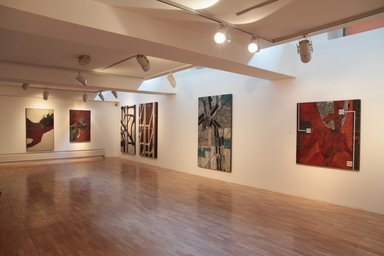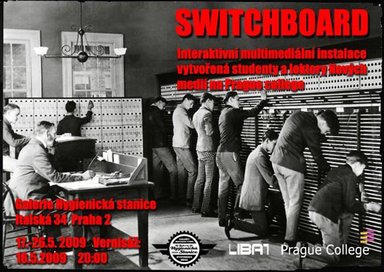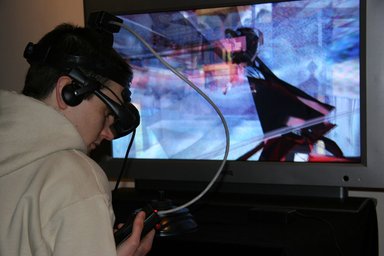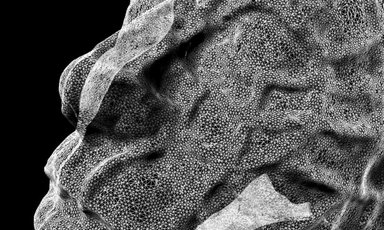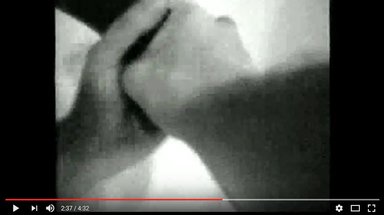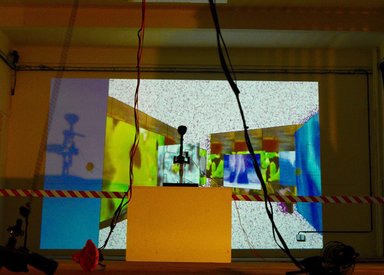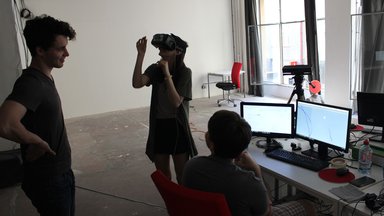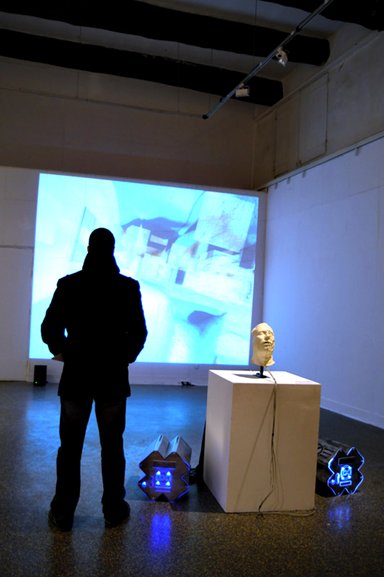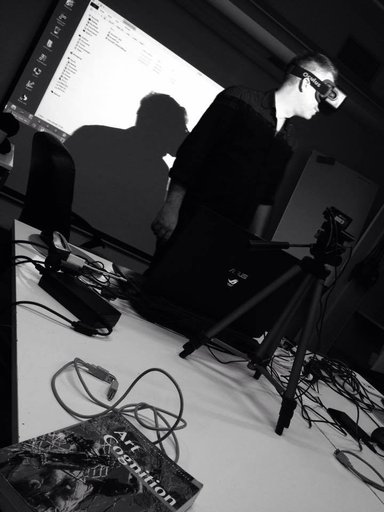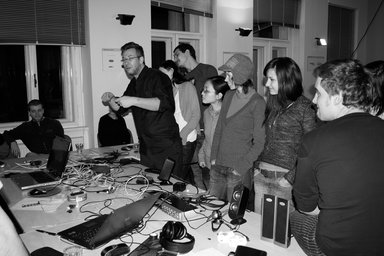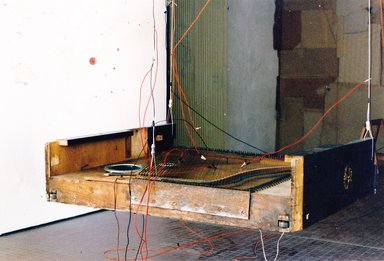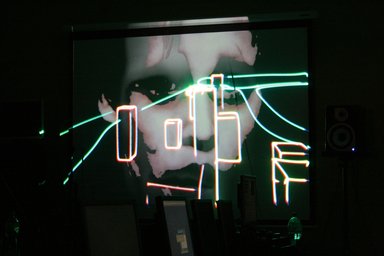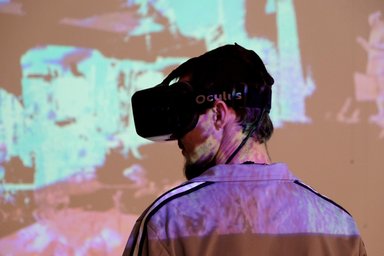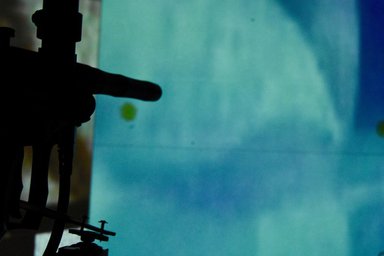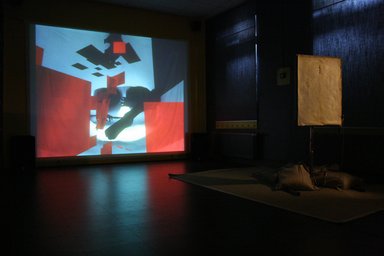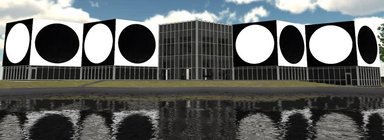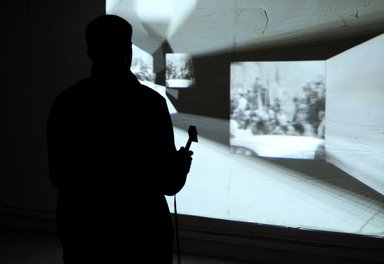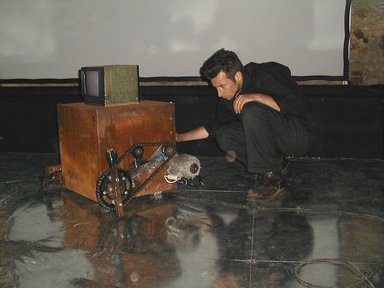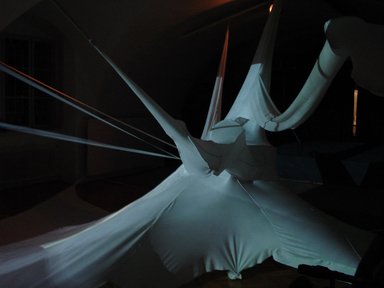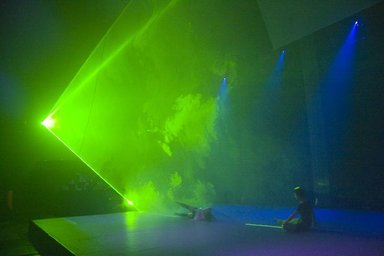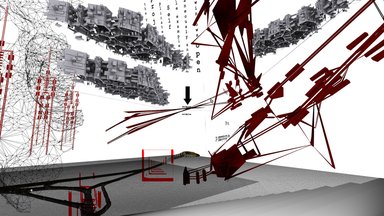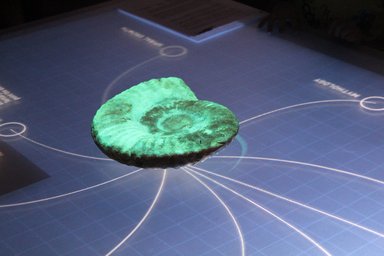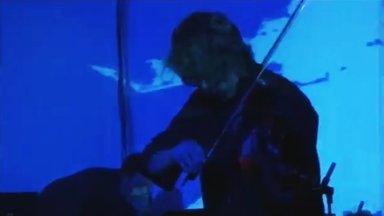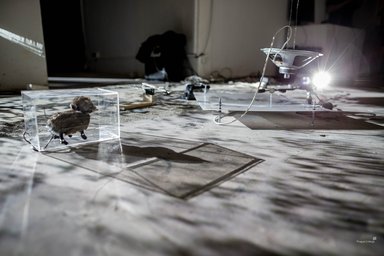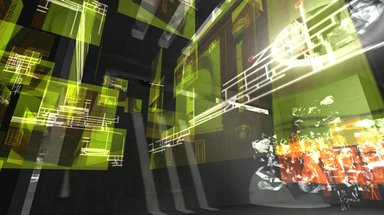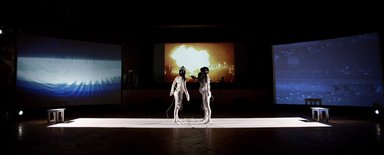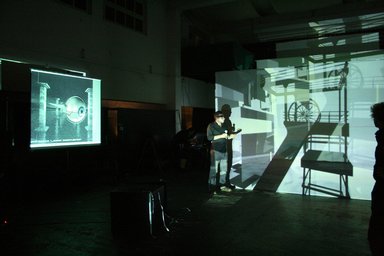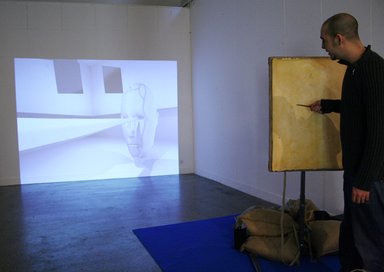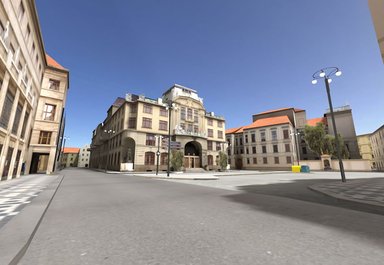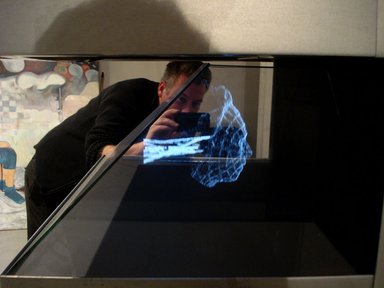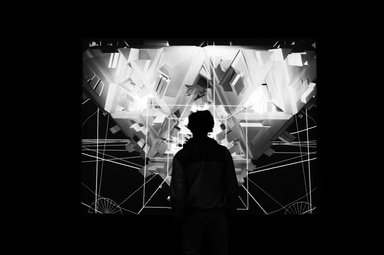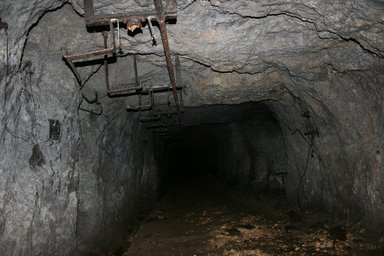UDOLI / THE VALLEY # 2008
Interactive Performance, Audio/Video, Sensors, 3D game engine
A motion performance and a digital installation / 45 min
A fairy composition of a family dinner during which reality slowly fades away. A mono-debate on the topic of monsters is raised. Is the reflection in a digital mirror scarier than the more authentic recording of our own shapes? And isn't it safer to become a phantom of our own reflection before the reflection itself becomes unidentifiable?
„The things have swallowed its mirror and have become transparent to themselves, entirely and completely present in themselves, in their full light, in the real-time, in a merciless transcription. In place of being absent in illusion, the things are forced to be transcribed into thousands of screens on the horizon, where not only reality disappeared, but also the image of it.
THE REALITY WAS EXPELLED FROM THE REALITY ITSELF.”
(J. Baudrillard)
„How low lays the black sky above me! How low are the stars! I am lying in such a small, starry room! My body is just a shadow; I am with no weight, just my soul is flying through the objects…I am a phantasm.” (L. Klíma)
Concept: J. Kopecký, P. Silondi,
Direction and Sets, Animations: J. Kopecký,
Animations, Sensors, Interactive 3D space, Network, MIDI, programming: P. Silondi,
Choreography: Z. Sýkorová,
Performing: Z. Sýkorová, J. Vránová,
Costumes: Z. Imreczeová,
Music, sound: M. Růžička, J. Burian,
Mask: M. Silondi,
Animation, light and projectors: P. Sedlák, P. Silondi, J. Kopecký, P. Krušelnický,
Produced by: M. Silondi, I. Machačová, A. Černý Eallin - J. Kolegar,
Supported by: Hl. m. Praha, MKČR, Experimentální prostor Roxy / NoD , Eallin
Photos by V.Goralcik, P.Kralik and Delphine
----------------------------------------------
Article published in Art Forum summer 2009
Time and space melted away during Údoli (The Valley), 2008, Jakub Kopecký and Pascal Silondis cacophonous performance piece, recently staged at Roxy/NoD) an experimental venue in the middle of Old town. Kopecký a well-known figure in Prague's theater community, and Silondi, a French-born artist known for his digital work, here incorporated video projections, reflective glass, and sound to depict a domestic scene as monstrous simulation.
Eighty spectators were allowed inside the dimly lit space, and found at its center a large reflective glass cube. The performance begins when colorful projections of digitally rendered human faces appear on three of the gallery's wails. As the eerie mouths of these visages open and close a movement controlled offstage by Kopecký, Silondi, and their collaborator Patrik Sedlák barely comprehensible phrases begin echoing through the space: The ear could only understand individual words.
Inside the cube a light turns on and off; when the light is turned on, a woman is visible through the cube's mirrored, translucent walls. Her face hidden behind long hair, she crouches on a table and, holding a fork and knife, makes jagged movements with her arms. The cutlery is connected by wires to a computer and with it she can direct the aural environment and images on the screens; as her movement becomes more aggressive, pulsating, artificial sounds cut violently into the room. Unbeknownst to the spectators, they too determine the course of the performance: A sensor responding to the audience's physical movements controls the light inside this "cage'' while also affecting the ambient noise and projected imagery.
At a certain point, the words spoken by the faces start to make sense and the relationship between the figures can be discerned. They represent a family: a hypochondriac father, a mother occupied with cooking a meal, and their architect son, who, it seems, is trying to escape the scene. A family meal is taking place, and the woman with cutlery trapped in the cube represents the rebellious daughter. As the piece draws to a conclusion, the faces dissolve into surreal visions, mass-media imagery, and obscene forms. Instead of the warm sensuality of home and hearth, this family's dinner is characterized by a clinical coldness an artificiality that spreads throughout the rooms reinforced by the electronic sounds an unfamiliar world that threatens to dissemble the ground beneath your feet.
In conceiving this performance, Kopecký and Silondi began with the work of Czech writer and philosopher Ladislav Klíma (1878-!928), whose largely undiscovered writings which posit that the world does not exist beyond our perception of it and comprise scurrilous often obscene fantasies inspired the starkly sexualized computer-generated images woven into the projections. The artists' interpretation of Klíma is based on Jean Baudrillard's notion of the simulacrum, and statements by both thinkers could be heard throughout the event. ("reality has been driven out of reality,'' a quote from Baudrillard's 1995 book, Le Crime parfait (The Perfect Crime), is the last thing heard before the performance ends). With this staging, situated at the border of theater but never crossing over, Kopecký and Silondi created an event that, despite all of its raw emotion and carnality appeared carefully con- trolled a digital mirror with horrifying reflections.
Noemi Smolik
Translated from German by Emily Speers Mears
© LIBAT 2013
